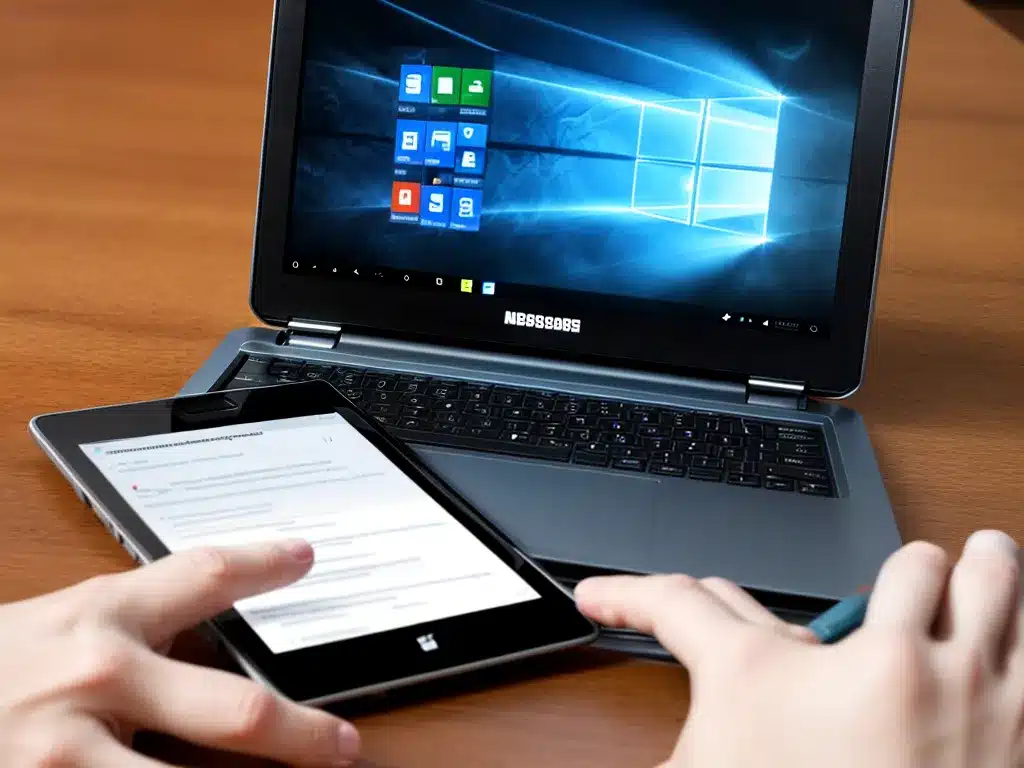Introduction
Having issues with device drivers in Windows can cause a lot of headaches. Devices may not work properly or at all when their drivers are faulty or outdated. The good news is that Windows includes a built-in utility called Device Manager that allows you to troubleshoot driver issues. In this guide, I will walk you through the steps I take to fix the most common driver errors using the Windows Device Manager.
Identifying Driver Issues
The first step is to open Device Manager and scan for any warning signs of driver problems. Here are some things I look out for:
-
Yellow exclamation icons – These indicate a driver issue with that device. It may be incorrectly installed or become unstable.
-
Missing devices – If a device is not showing up at all in Device Manager, it likely means the driver is not installed properly or corrupted.
-
Error codes – Expanding a device often shows error codes that provide clues to what is wrong with the driver.
-
Device not working – If a device has an error icon or is missing but others work fine, that points to a driver problem with that specific device.
Any of these symptoms typically lead me to investigate the drivers for that device further.
Updating Drivers
Once I’ve identified a driver that needs troubleshooting, the first step I take is updating to the latest driver version. Here is my process for that:
-
Identify the device make and model – This is needed to find the correct driver. Details can be found under the device properties.
-
Find the latest driver – I go to the device manufacturer’s website and search for the most updated driver for my version of Windows.
-
Download and install the driver – I carefully follow the instructions to install the new driver. Rebooting is often required.
-
Test the device – I then verify the device is working properly with the updated driver.
Updating to the latest driver solves many common driver errors. It’s one of the first things I try when troubleshooting driver issues in Device Manager.
Uninstalling and Reinstalling Drivers
If the driver update does not resolve the problem, I then attempt uninstalling the driver completely and reinstalling it fresh. The steps are:
-
Uninstall the current driver – In Device Manager, I right-click the device and select Uninstall device. This removes the existing driver.
-
Scan for hardware changes – I then right-click the computer name and choose Scan for hardware changes. This detects the device again and reinstalls the driver.
-
Reboot and test – I reboot the computer and verify if the driver issue is fixed.
-
Reinstall the driver manually – If scanning for changes does not reinstall the driver correctly, I then download the latest driver from the manufacturer and manually install it again.
Reinstalling from scratch often resolves driver errors that a simple update does not fix. It essentially resets the driver stack.
Rolling Back Drivers
If a recently updated driver begins causing problems, I leverage Device Manager’s ability to roll back to the previous driver version:
-
Right-click the device and select Properties – This opens the device properties window.
-
Go to the Driver tab – Here you can see the driver version and date.
-
Click Roll Back Driver – This initiates reverting back to the earlier driver.
-
Reboot and test – As always after a driver change, I reboot and confirm the issues are resolved.
The roll back feature is useful for undoing problematic driver updates and returning to a last known good configuration.
Removing Duplicate Devices
One lesser known issue is having duplicate or phantom devices appear in Device Manager, which can cause conflicts. I remove duplicates by:
-
Determine the real device – Identify which one is the actual, physical device and which is the phantom duplicate.
-
Uninstall the duplicate – Right-click the false duplicate and select Uninstall device.
-
Reboot – After removing the duplicate, a reboot is necessary.
-
Verify it’s gone – Check that Device Manager only shows the real device now.
Duplicate devices can sometimes be hidden when different drivers claim the same device. Removing duplicates cleans up Device Manager.
Troubleshooting Tips
Here are some additional troubleshooting tips I find useful when fixing driver issues in Device Manager:
- Check for Windows updates and install all available ones. Updates often contain driver fixes.
- Try connecting the device to a different USB port or using a different cable. This can rule out a faulty port or connection.
- If updating drivers from a manufacturer, get them directly from the official website when possible. Third party sites may have outdated or incorrect drivers.
- Disable antivirus temporarily when installing drivers, as it can sometimes block them.
- If a USB device has problems, try plugging it into a different computer. If it works there, it points to a driver issue on the problem computer.
- For severe driver problems, use System Restore to roll back the entire system to a point before the driver was installed.
Following these steps and tips methodically usually allows me to resolve any driver errors I encounter in Device Manager and get hardware working again. The key is to be patient, troubleshoot systematically, and leverage the tools provided in Device Manager.
Summary
Fixing driver problems is essential to maintain a properly functioning system. The Windows Device Manager provides an centralized interface to manage drivers and troubleshoot issues. I use it to update drivers, uninstall and reinstall them, roll back to previous versions, and remove duplicates. With the right device information and troubleshooting techniques, you can resolve common driver errors and get your hardware running smoothly.













